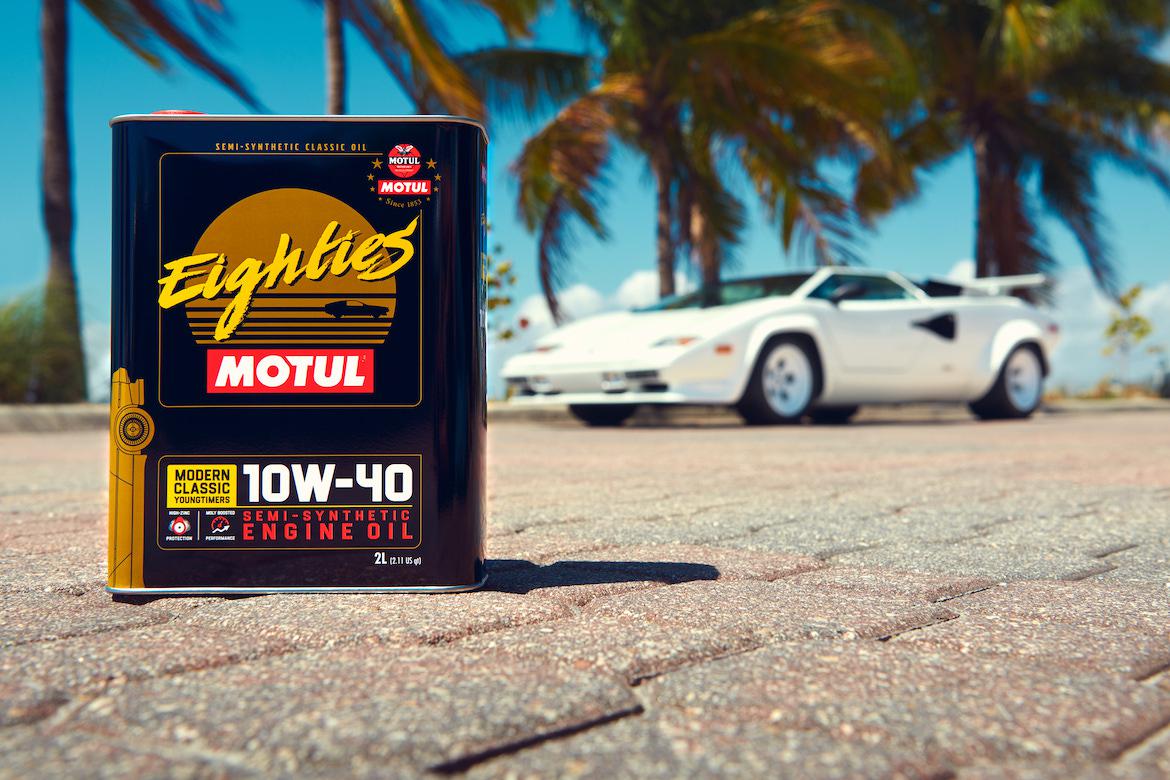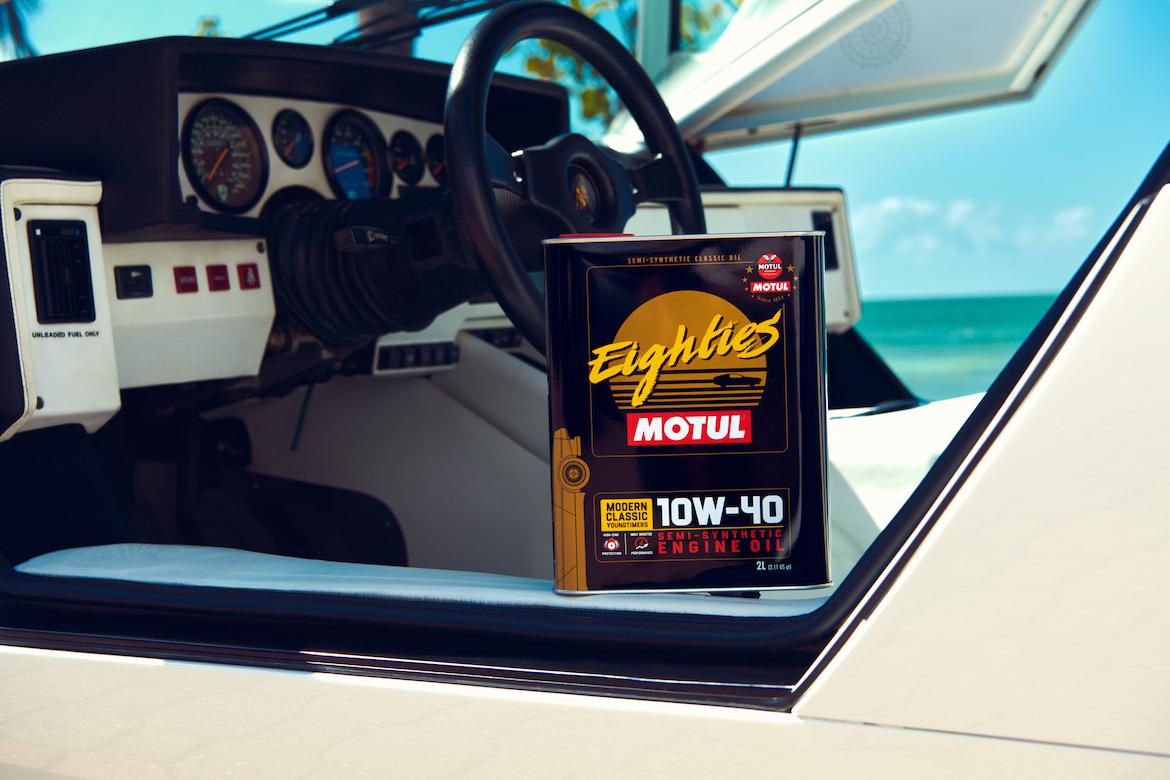
Sponsored Content Presented by Motul.
One of the hottest segments in the world of classic sports cars at the moment revolves around the epicenter of Gen X nostalgia, the 1980s and 1990s.
Whether they're from Asia, Europe or even the U.S., cars of that era are showing up more and more at auctions, cruise-ins and showfields. And because this era also delivered disc brakes, fuel injection and great handling, these cars work well for track events, too.
While these cars may still feel modern to many of us who grew up with them, that era was further in the past than we like to admit—a quick look through your high school yearbook will confirm that. Engines from this era were built using different standards, technologies, tolerances and metallurgies than previous or subsequent ones. That means properly caring for the lubricating system is paramount for long life and proper performance.
Enter Motul.

Motul is primarily known in the U.S. as a brake fluid or powersports brand, but that’s not by design. All over the world, Motul is one of the most respected names in engine and drivetrain lubrication for street and motorsports applications. As the brand becomes more and more recognizable in North America, it's marketing its oils more and more aggressively to demanding consumers.
And Motul is nothing if not directly involved in the car enthusiast community. “We’ve been the exclusive oil sponsor of the Long Beach Japanese Classic Car Show for a few years now,” says Motul Technical Director Joey Cabrera.
Cabrera has deep roots in the Gen X-era classic car scene as well. Before he worked for Motul, he was with Tokico Shocks, one of the go-to brands for sporty cars in the ’80s and ’90s.
“Those cars—it seems strange to call them classics—of that era, like Honda Civics and early Miatas and E30 BMWs, were just so good and got so many people into car culture,” says Cabrera. “Of course, we love them because we grew up with them, but even younger people appreciate just how much that era of cars changed the scene.”
Which is why Motul decided to expand its lineup of oils specifically formulated for classic cars to include bespoke oils for the Radwood generation.
“Over time, technologies and manufacturing methods change as well as environmental regulations,” says Cabrera. “So a car manufactured in the 1980s is built to a different set of standards and with different emissions requirements in mind.
“A modern oil is going to be designed around modern emissions standards and controls,” he continues, “which may not be as compatible with some of the chemical formulations that older engines like. Plus, you have a lot of engines from that era using flat-topped lifters, and turbocharging was just coming into the mainstream. There’s a lot of specific mechanical demands from that era.”
Motul already offered a lineup of classic oils, but it was mostly focused on older, pre-emissions vehicles. Straight weights and thicker oils like 20W50 were on the menu, but there wasn’t as much demand for oils specifically for ’80s and ‘90s classics.

Consumer demand and Motul’s involvement in the community changed that, and now its catalog includes a semi-synthetic 10W40 for cars of the 1980s and turbocharged classics plus a semi-synthetic 10W30 for ’90s cars.
Both these oils come in clever, period-design packaging that will look great on a shelf while it’s performing great inside an engine. It’s not often we judge an oil by its container, but our hats are off to the Motul art department for the funky, retro styling of these 2-liter metal cans.
Packaging aside, the chemical composition of an oil has to be compatible with the mechanical parts it’s protecting. Motul’s classic lineup offers high concentrations of ZDDP and molybdenum, which work together to provide exceptional protection for metal-to-metal surfaces.
ZDDP, also known as zinc dialkyldithiophosphate—an oil additive that dates back to pre-WWII—forms a protective barrier on metallic surfaces. The soft zinc and phosphates help create an oil film on the microscopically irregular surfaces of internal engine parts, while the molybdenum component provides a smooth interface layer between that ZDDP layer and the base oil.
That’s a fairly rudimentary picture of the interactions—the science is obviously more complex than that—but it suffices to say that for older engines, a more concentrated ZDDP/moly formulation is highly beneficial. Motul’s classic lineup contains 1800 ppm of ZDDP, among the highest concentrations in the industry.
As for use, Cabrera stresses that these oils are suitable for a variety of situations. “Even for someone who’s going to take their car to the track once in a while, as long as you’re talking about an engine built to the period-correct specs, these oils are appropriate for those occasional track weekends,” he explains. “You might consider a slightly more aggressive fluid change schedule, but these oils can withstand the occasional track day. For someone who’s built a more aggressive racing engine, we have plenty of stuff in the catalog for them as well, like our 300V racing oil lineup.”

Motul continues to make strides into North America not only as a brake fluid and powersports brand, but as a full-line oil company—just as it's known in the rest of the world.
And Cabrera adds, “With our service oils having approvals from manufacturers like BMW and Mercedes—those are some of the toughest oil specifications in the world. Our entire oil lineup is made with the same care and precision as the oils that we make for the world’s pickiest OEMs.”
These new products in the Motul catalog are also seeing some additional distribution outlets in North America.
“All of our oils—including our classic lineup—are easily available through online retailers in the U.S.,” Cabrera tells us. “And now we’re seeing some large chains like NAPA in parts of Canada carrying broad parts of our oil lineup in stores.
“With our increased distribution and popularity in the U.S., we expect to see more brick-and-mortar availability here soon as well. We’re already extremely popular with specialty shops through our commercial distribution network, and high-end shops that work on premium brands love having access to our oils since they carry all the premium certifications.”
View all comments on the CMS forums
You'll need to log in to post.